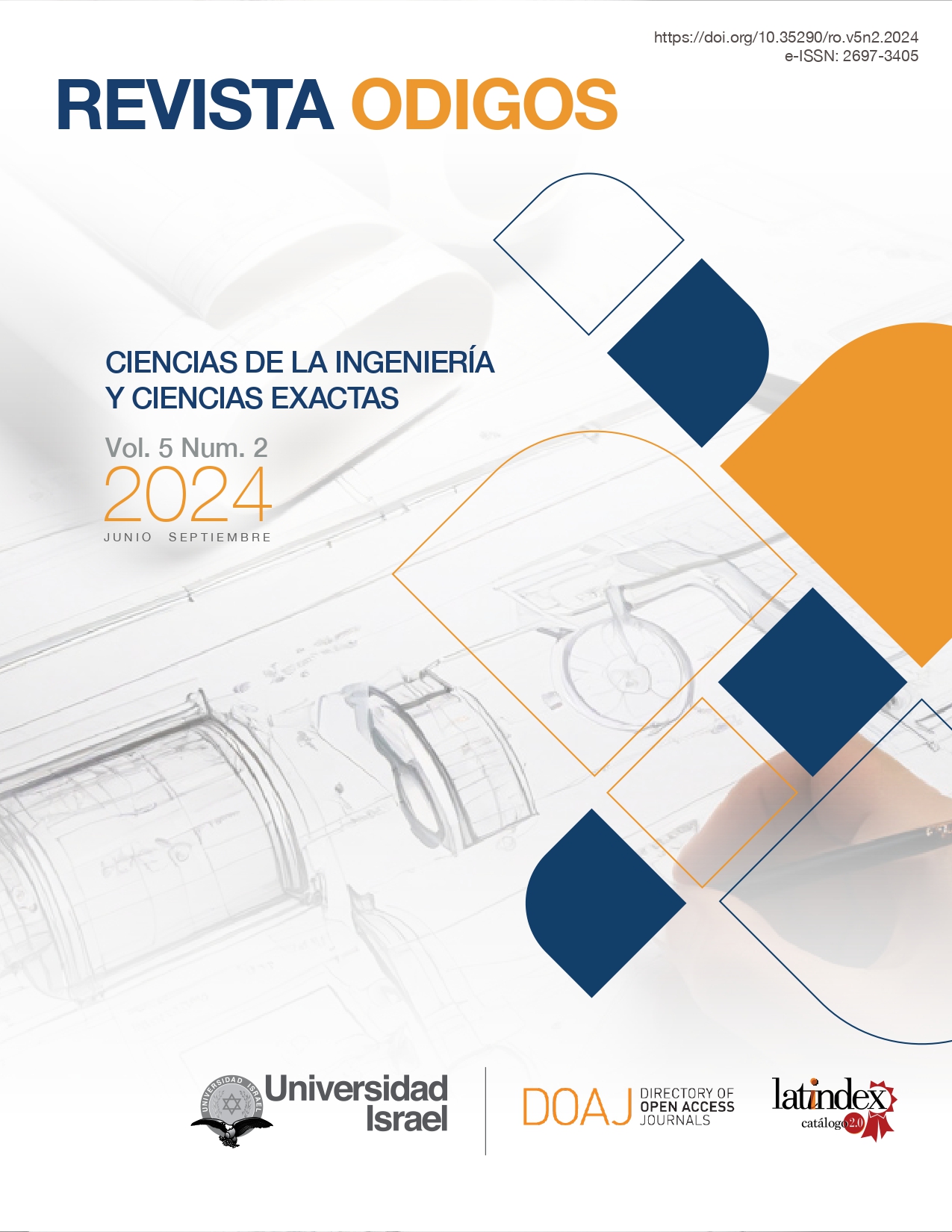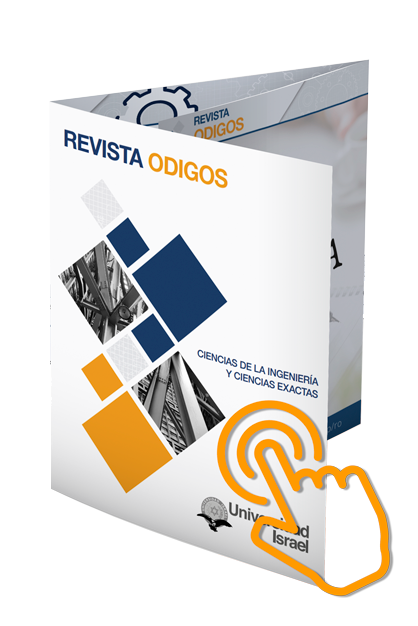Transformación de un reactor en desuso para su utilización como intercambiador de calor
DOI:
https://doi.org/10.35290/ro.v5n2.2024.1155Palabras clave:
control de procesos, mantenimiento, intercambiador de calor, reingeniería, reactor, sensoresResumen
La investigación se centró en revitalizar un reactor inactivo por más de 25 años, otorgándole una doble función como intercambiador de calor. Este proceso implicó una reingeniería completa, la incorporación del control de procesos mediante el monitoreo de variables claves y la creación de un manual de uso y un plan de mantenimiento para maximizar su durabilidad y mejorar la disponibilidad del equipo. Inicialmente, se llevó a cabo una revisión teórica del material necesario, seguida por una evaluación de las condiciones iniciales del equipo. Además, se corrigieron los errores identificados y se determinaron las reparaciones y adquisiciones necesarias. Posteriormente, se propuso un enfoque que permitiera a la Universidad Metropolitana aprovechar el equipo para nuevas prácticas e investigaciones, incorporando un control de procesos automatizado que permitió el registro de variables relevantes y facilitó su análisis posterior, integrando sensores para registrar datos significativos. Los valores cuantitativos obtenidos de las pruebas, como la velocidad de transferencia de calor y la uniformidad de su distribución radial demostraron que la agitación afecta la transferencia de calor y su distribución. Esta propuesta ayudó a mitigar el costo de oportunidad al tener el equipo operativo para la educación y la investigación, generando beneficios financieros para la institución.
Descargas
Referencias
Arduino (4 de diciembre de 2023). Arduino Software (IDE) 2.2.1. Arduino.
https://www.arduino.cc/en/software
Çengel, Y. y Ghajar, A. (2020). Transferencia de Calor y Masa: Fundamentos y
aplicaciones (6a ed.). McGraw-Hill.
Chilton, T., Drew, T. y Jebens, R. (1944). Heat Transfer Coefficients in Agitated
Vessels. Industrial & Engineering Chemistry, 36(6), 510-516.
https://www.doi.org/10.1021/ie50414a006
Elecbee (8 de noviembre de 2023). Elecbee, buy from original factory. Elecbee.
Dallas Semiconductor (2023). DS18B20 Programmable Resolution 1-Wire Digital
Thermometer [hoja informativa]. https://html.alldatasheet.com/html-pdf/58557/DALLAS/DS18B20/181/1/DS18B20.html
Horngren, C., Datar, S., y Rajan, M. (2012). Contabilidad de costos. Un enfoque
gerencial (14ª ed.). Pearson Educación. https://profefily.com/wp-content/uploads/2017/12/Contabilidad-de-costos-Charles-T.-Horngren.pdf
Kanamori, H., Yamamoto, T., Kato, Y., y Zamzam, Z. (2011). Characteristics of Heat
Transfer Coefficient Distribution at Inside Wall of an Agitated Vessel Based on Data Measured by using a New Measuring Method. Journal of Chemical Engineering of Japan, 44(11), 908-918. https://doi.org/10.1252/jcej.11we043
Knott, R. (21 de diciembre de 2023). Cómo hacer un manual de usuario: guía completa.
The TechSmith Blog. https://www.techsmith.es/blog/manual-usuario/
National Electrical Manufacturers Association (15 de noviembre de 2023). NEMA 250
Enclosure Types. NEMA. https://www.nema.org/standards/view/nema-250-enclosure-types
Nobile, V. y Bustamante, G. (1998). Oxidación de Hidrocarburos Parafínicos a Nivel
Piloto [Tesis de grado, Universidad Metropolitana]. Repositorio UNIMET. https://unimet.ent.sirsi.net/custom/web/tesis/12/ATTP155N62O9.pdf
Pietranski, J. (2020). Over-all Heat Transfer Coefficients in Agitated Vessels. [hoja
informativa]. PDH Online. https://pdhonline.com/courses/k102/k102content.pdf
Saucedo, R. (2001). Cadena de suministro [Tesis de posgrado, Universidad Autónoma
de Nuevo León]. Repositorio UTEL.
https://cd.dgb.uanl.mx/bitstream/handle/201504211/3850/17440.pdf?sequence=1&isAllowed=y
Zhou, Y., Wang, L., y Jiang, B. (2019). An investigation of the heat transfer
performance of dual improved intermig impellers in a stirred tank with an inner
heating coil. Brazilian Journal of Chemical Engineering, 36(3), 1143-1154. https://doi.org/10.1590/0104-6632.20190363s20180415
Publicado
Número
Sección
Licencia
Derechos de autor 2024 Victoria Inés Acuña Ramírez, José Manuel Barriola Damborenea, Miguel Manuel Pérez Hernández

Esta obra está bajo una licencia internacional Creative Commons Atribución 4.0.
Los autores que participen de los procesos de evaluación y publicación de sus ediciones conservan sus derechos de autor, cediendo a la revista el derecho a la primera publicación, tal como establecen las condiciones de reconocimiento en la licencia Creative Commons Reconocimiento 4.0 Internacional (CC BY), donde los autores autorizan el libre acceso a sus obras, permitiendo que los lectores copien, distribuyan y transmitan por diversos medios, garantizando una amplia difusión del conocimiento científico publicado.
- Toda derivación, a partir de esta obra, deberá citar la fuente y a la primera publicación en esta revista. Se permiten derechos comerciales no lucrativos sobre sus contenidos.
- Los autores pueden realizar otros acuerdos contractuales independientes y adicionales para la distribución no exclusiva de la versión del artículo publicado en esta revista, es decir, podrán incluirlo en un repositorio institucional o publicarlo en un libro, siempre que indiquen claramente que el trabajo se publicó por primera vez en esta revista.
- Se permite y recomienda a los autores compartir su trabajo en línea, con la finalidad de intercambios productivos para una mayor y más rápida citación del trabajo como lo establece los efectos del movimiento ‘Acceso Abierto’.
- No puede aplicar términos legales o medidas tecnológicas que restrinjan legalmente a otros de hacer cualquier cosa que permita la licencia: https://creativecommons.org/licenses/by/4.0/deed.es
- La Revista ODIGOS es financiada completamente de los aportes realizados por nuestra entidad editora: Universidad Tecnológica Israel; por tal motivo, no establece cargos o cobros de ninguna índole a sus autores y colaboradores, así como tampoco genera pagos o remuneraciones de ningún tipo a ellos.
- Se asignará un Digital Object Identifier (DOI) a cada publicación.




